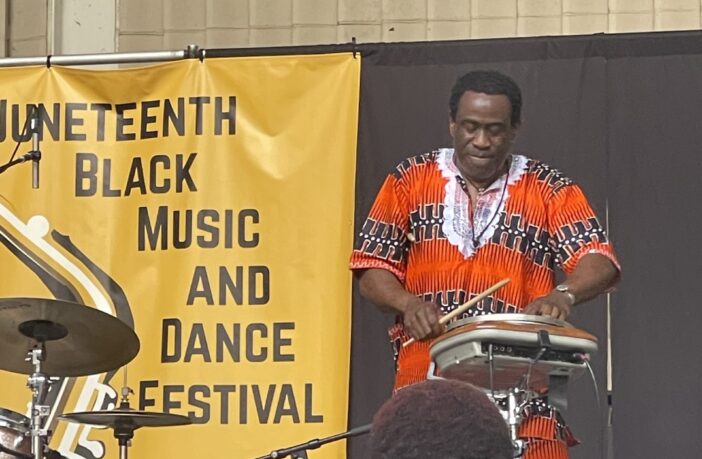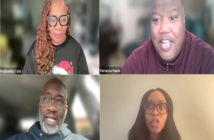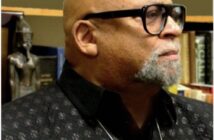A forecasted severe storm never arrived at Marcus Garvey Park on a recent weekend, but a musical blast occurred on the Richard Rodgers Stage, ignited by saxophonist Christopher McBride and his ensemble and intensified later by percussionist/ethnomusicologist Will Calhoun and his Mali Project.
It would be a gross understatement to say the 4th Annual Juneteenth Black Music and Dance Festival, sponsored by the National Jazz Museum in Harlem (NJMH) was a success: It was a musical storm—a torrent of triumphant notes that swept across the park, and a welcomed relief, despite the sweltering heat, from Mother Nature’s anticipated deluge.
Two-time Grammy winner Calhoun, perhaps best known for his long and fruitful affiliation with Living Colour, featured Malian master musician Cheick-Tidiane Seck on keyboards, who gave the project an additional measure of authenticity. Calhoun practically conceded the concert to Seck, after noting how influential Seck has been to his understanding of the folk music of Mali.
Seck, whose reputation as a composer, arranger, and performer with such notables as Fela Kuti and Youssou N’Dour is globally recognized, placed the moment in an African American context with an opening number dedicated to the late Hank Jones, the pianist with whom he worked.
The intro was melodically delivered by Seck, accompanied by Madou Diabate on the kora, which was rhythmically amplified by Calhoun, guitarist David Gilmore, and bassist Matt Garrison, whose proficiency is as profound and creative as his father’s. The interplay between them was reminiscent of their days in Wayne Shorter’s band.
Seck laid out layers of inventive sonics—a veritable sheet of sound and texture. Randy Weston was another associate whom Seck summoned from the ancestors and here, the pulse of the music was imbued with jazz and West African elements. Calhoun’s study and background of a variety of African motifs are usually intimated in all of his playing, which often mixes with a bit of bop, rock, and—of course—lavish dollops of funk, as it did on his solo.
On occasion, Seck embellished his keyboard runs with a voice akin to N’Dour’s but with less keening and more Kuti. That vocalization merged delightfully, giving each member of the band a platform to explore the rich harmonic nuances, never more explosive than Boubacar Diabate’s swift hands on the djembe and conga drums. When Antoine Roney switched from tenor to soprano saxophone, he provided a haunting lyricism that, with Seck’s ululations, once again aroused images of a pristine Africa. His attack on the horn was very much like McBride’s earlier performances.
Grace notes and a calming mood prevailed when Calhoun finally had his ambient instrument ready to go, and it resonated across the stage, where Seck knew intuitively how to wrap expressive chords and arpeggios to the vibrations.
All in all, the concert was a powerful amalgamation of beat and motion, inspiring a gaggle of dancers to twist and shout in front of the ensemble. Senator Cordell Cleare, having sat in the blistering sun all afternoon, was invited to the stage and put the whole affair in historical and artistic context with her comment that “jazz was America’s unique art form.” Tracy Hyten-Suffern, NJMH executive director, echoed that perspective.
Like this:
Like Loading…



